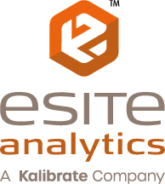When eSite was founded nearly twenty years ago there was only a handful of companies using geospatial intelligence to inform business decisions. We talked about simple maps and models in the context of business intelligence.
Today, the industry is riddled with jargon and buzzwords. Throughout the day, we hear complicated expressions such as “send your coordinates” (instead of email your contact info) and “single source of truth” (even eSite’s savviest analysts are still baffled by how you could accomplish this).
In the chaos of catchphrases, it can be difficult to figure out what your goals should be, let alone how you to reach them. (Do I need a predictive analytics, spatial analytics or business analytics partner? Should our company hire a site selection consultant or real estate advisor?)
To help provide some clarity, we’re addressing one of the most misunderstood, yet frequently used, terms: Modeling.
What is modeling?
Modeling, at its core, is a forecasting process used to help predict the best possible outcome. Companies use it to see which methods, sites or solutions score well against a “model” of various influences—both positive and negative—on future store performance, marketing, site selection, staffing and more.
How does modeling work?
At eSite, modeling is used to help companies select sites and optimize brick-and-mortar store networks. The eSite model selects an intersection representative of an area with a high level of positive influences (like being near a desired demographic, or proximity to a shopping center) and minimal amount of negatives (such as being too close to your biggest competitor, or too far from any potential customer traffic).
Modeling is the first step to pinpointing the premier locations for your brand. While your company may not select the specific intersection used in the model (and often, you don’t), it’s a good indicator of the best nearby locations and similarly situated locations.
How accurate is modeling?
We get this question a lot, especially from new clients, and it’s the wrong question to be asking.
Here’s why:
Modeling is a powerful forecasting process, but it’s not the final step. A model doesn’t know if there’s actual, available real estate at the “sample” intersection, and it can’t always know about certain site characteristics, such as the exits and entrances, potential signage or visibility issues, or the many other factors that could impact foot traffic.
The better question to ask is:
What does the model point to?
Modeling is a powerful way to pinpoint a specific area for investigation, including viable real estate options a mile or so away. It’s a way to narrow hundreds of potential sites down to a handful or even just one.
Then, when a potential site is identified, your analysts can conduct further studies to determine if it meets the model requirements, sales performance targets and other important factors specific to your business needs.
See eSite’s model in action.
Would you like to hear more? Schedule a consultation and our team will be happy to walk you through a real-life example relevant to your business.

